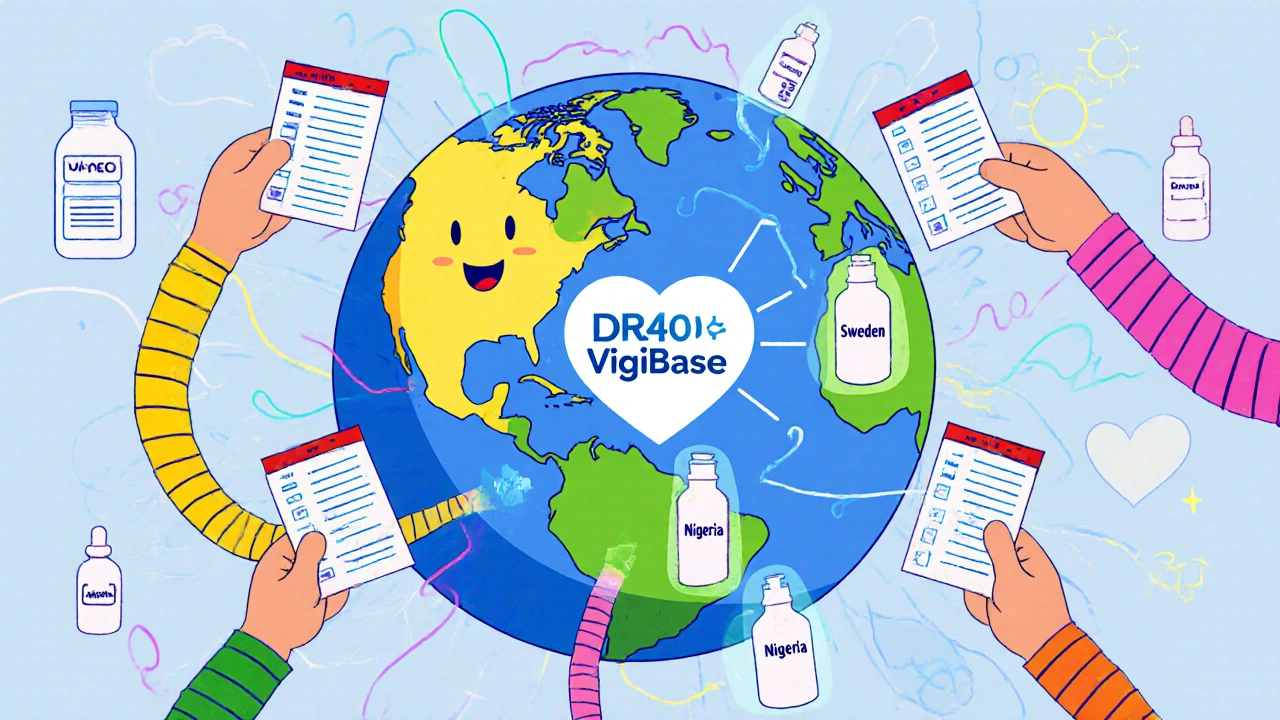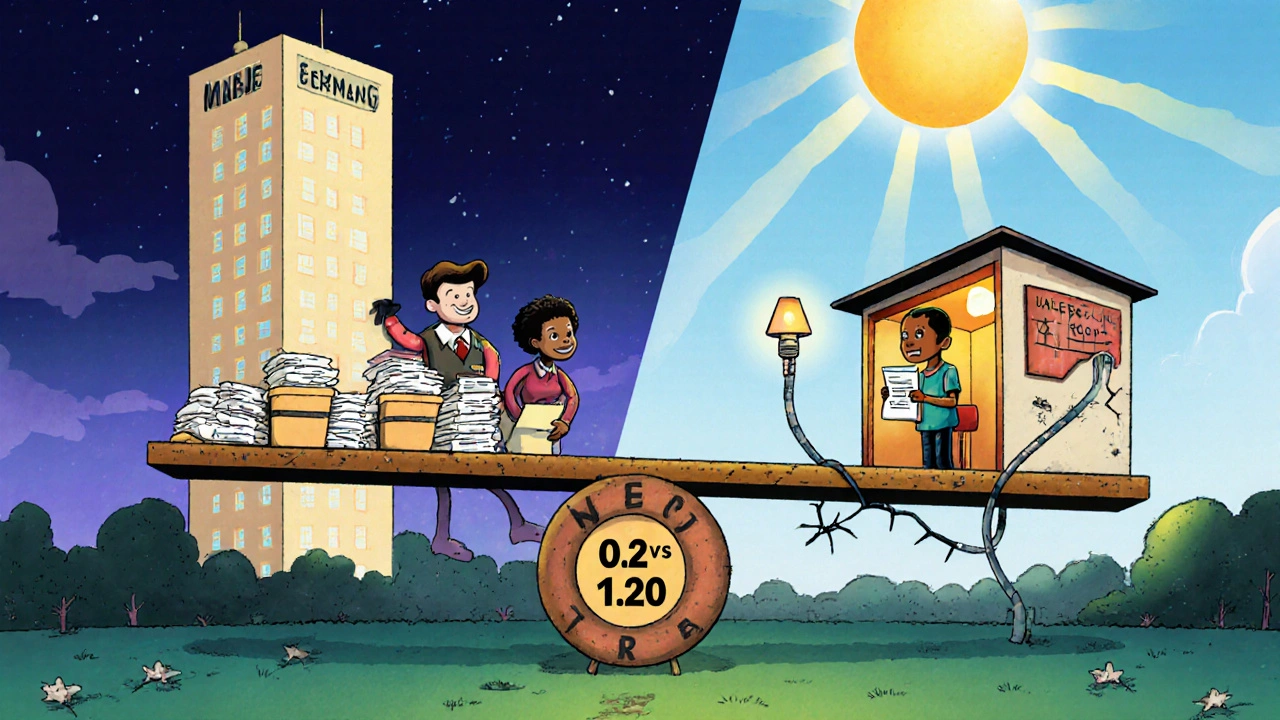
Every time someone takes a medicine, there’s a silent system working behind the scenes to watch for harm. This isn’t science fiction-it’s pharmacovigilance, the global network that tracks adverse drug reactions and keeps millions safe. When a new painkiller causes unexpected heart issues in Brazil, or a vaccine triggers rare blood clots in Sweden, this system catches it-not by accident, but by design. The scale is staggering: over 35 million individual reports of drug side effects stored in one central database, updated daily by 170 countries. Yet most people have never heard of it.
How the Global Drug Safety Net Works
The backbone of international drug safety is the WHO Programme for International Drug Monitoring (a global network coordinated by the World Health Organization since 1968 to collect and analyze reports of adverse drug reactions). It’s not a single agency, but a web of national centers. Each country collects reports from doctors, pharmacists, patients, and hospitals-anything from a mild rash to a fatal reaction. These reports, called Individual Case Safety Reports (ICSRs), get sent to the Uppsala Monitoring Centre (the WHO Collaborating Centre in Sweden that manages the global adverse drug reaction database) in Sweden.
That’s where VigiBase (the world’s largest database of individual case safety reports for medicines, maintained by the Uppsala Monitoring Centre) comes in. Think of it as a massive, searchable library of drug side effects. Every report is coded using strict standards: drugs are labeled with names from the WHODrug Global (a standardized dictionary of over 300,000 medicinal products used globally for consistent drug identification), and side effects are classified using MedDRA (the Medical Dictionary for Regulatory Activities, a standardized terminology with over 78,000 terms for describing adverse events). This uniformity lets analysts spot patterns across borders.
For example, if 50 reports of liver damage come in from India, 30 from Nigeria, and 15 from Argentina-all linked to the same generic drug-VigiBase flags it as a potential signal. That signal then triggers investigations by national regulators. Without this global pooling of data, a dangerous pattern might be missed in one country because it’s too rare to notice locally.
Regional Systems: EU, US, and Beyond
While WHO’s system is global, powerful regional networks operate alongside it. The European Union’s EudraVigilance (the EU’s centralized system for collecting and analyzing adverse drug reaction reports from member states and pharmaceutical companies) is one of the most advanced. It handles about 1.2 million reports a year, with 98% submitted electronically within a week. Unlike WHO, which relies on voluntary reporting, the EU has legal teeth: drug companies must report serious side effects within 15 days. The Pharmacovigilance Risk Assessment Committee (PRAC) (the EU committee responsible for evaluating drug safety signals and recommending regulatory actions) reviews high-priority signals in 60 days or less.
The U.S. FDA Adverse Event Reporting System (FAERS) (the U.S. government’s database for collecting reports of adverse events related to medications and medical products) gets about 2 million reports annually. It’s independent from WHO’s system but does feed data into VigiBase. The FDA doesn’t require the same strict timelines as the EU, and its system leans more on spontaneous reports from the public and providers.
The big difference? The EU has real-time access to electronic health records from 150 million patients, which lets them detect signals faster and more accurately. In contrast, the WHO system’s strength is its reach-it includes data from countries where most drugs are never tested in clinical trials. That’s how the link between the dengue vaccine Dengvaxia and severe illness in kids who’d never had dengue before was spotted in the Philippines in 2017-something no Western clinical trial would have caught.
The Data Gap: Who Reports, and Who Doesn’t
Here’s the uncomfortable truth: the global drug safety system is lopsided. Just 16% of the world’s population lives in high-income countries-but they send 85% of all reports to VigiBase. Sweden reports 1,200 adverse events per 100,000 people every year. Nigeria? Just 2.3 per 100,000. That’s not because Nigerians don’t get side effects. It’s because they lack the systems to report them.
According to WHO, only 42% of low- and middle-income countries have fully functional pharmacovigilance systems. Many don’t have dedicated staff, funding, or internet access. A 2021 WHO assessment found that African nations spend an average of $0.02 per person on drug safety monitoring. In Australia or Germany? Over $1.20. That’s not a gap-it’s a chasm.
Even when systems exist, they’re underused. In Ethiopia, after implementing the web-based PViMS (a pharmacovigilance monitoring system developed by MTaPS that enables real-time reporting from health facilities), reporting time dropped from 90 days to 14. But only 35% of health centers still submit reports regularly-because of power outages, slow internet, or lack of training.
Training is another issue. WHO says pharmacovigilance officers need 40 hours of specialized training. In Southeast Asia, 68% have had less than 15. You can’t expect accurate reporting if the people entering the data don’t know how to identify or classify a serious reaction.
How Technology Is Changing the Game
Artificial intelligence is no longer a buzzword in drug safety-it’s a tool. The Uppsala Monitoring Centre now uses AI to scan VigiBase for signals. In a 2023 study, AI cut false positives by 28% compared to older methods. That means fewer distractions and faster identification of real dangers.
Electronic reporting is also growing fast. Since 2020, 45 low- and middle-income countries have adopted digital tools for vaccine safety monitoring. Transmission time for reports dropped from 60 days to 7. Mobile apps are helping too. In the UK, 78% of healthcare workers use the Yellow Card app to report side effects. The result? Over 100,000 reports a year, 95% submitted electronically within 48 hours.
By 2025, the world will roll out ISO IDMP (the International Standards Organization’s Identification of Medicinal Products standard, designed to harmonize drug data across 100+ data elements globally). This will standardize how drugs are named, packaged, and identified-from the active ingredient to the manufacturer’s batch code. That means if a side effect pops up in Mexico and Brazil, systems can match the exact same drug-even if it’s sold under different brand names.

Why This System Matters More Than Ever
Drug safety isn’t a one-time check. It’s a lifelong watch. A drug can pass clinical trials and still cause harm in real-world use. Why? Because trials involve thousands of people. Real populations involve billions-with different genetics, diets, other medications, and health conditions.
Take paracetamol. It’s safe for most people. But in malnourished populations or those with chronic alcohol use, even normal doses can cause liver failure. Without global monitoring, that risk stays hidden until someone dies. The same goes for new antibiotics, cancer drugs, or mental health meds. The system doesn’t just protect individuals-it protects public health.
And the stakes are rising. The global pharmacovigilance market is expected to hit $13 billion by 2030. Big pharma now spends millions on safety teams. But money doesn’t fix broken systems. Only political will, funding, and training do.
What’s Next for Drug Safety Monitoring
There’s progress. Ukraine reactivated its national pharmacovigilance center in March 2023. Zanzibar joined the WHO network in January 2024. Yemen followed in late 2022. These aren’t just names on a list-they’re lifelines.
But the future depends on two things: equity and automation. If low-income countries keep being left out, the system will keep missing critical signals. And if we don’t automate more of the analysis, the volume of data will drown human reviewers.
The goal isn’t just to collect more reports. It’s to make every report count-no matter where it comes from. Because a drug side effect in one country is a warning for everyone.
What is the main purpose of international drug safety monitoring?
The main purpose is to detect, assess, and prevent harmful side effects of medicines after they’ve been released to the public. This helps ensure that the benefits of a drug continue to outweigh its risks throughout its entire lifecycle, protecting patients and guiding regulatory decisions worldwide.
How does VigiBase help detect new drug risks?
VigiBase collects over 35 million individual reports of adverse reactions from 170+ countries. By using standardized coding for drugs and side effects, analysts can spot unusual patterns-like a rare liver injury appearing across multiple countries after a specific drug is used. These patterns, called signals, trigger further investigation by health authorities.
Why do high-income countries report more adverse reactions?
They have better infrastructure: trained staff, electronic reporting systems, public awareness campaigns, and funding. It’s not that side effects happen more often-they’re just more likely to be noticed, documented, and reported. In many low-income countries, a patient might never see a doctor after a reaction, or the clinic lacks the tools to submit a report.
Can patients report drug side effects themselves?
Yes. In many countries, including the U.S., UK, Canada, and Australia, patients can report side effects directly through online portals or mobile apps. In the UK, the Yellow Card app lets anyone submit a report in under five minutes. These reports are reviewed and added to national and global databases.
How are new drug safety signals acted upon?
Once a signal is confirmed, regulators can take several actions: update drug labels with new warnings, restrict use in certain groups, require additional studies, or even remove the drug from the market. The EU’s PRAC and the U.S. FDA make these decisions based on the strength of the evidence and the potential public health impact.
Is the global drug safety system reliable?
It’s the best system we have, but it’s not perfect. It’s highly effective at detecting major, widespread risks-but weaker at spotting rare or region-specific reactions in under-resourced countries. Ongoing improvements in AI, automation, and global equity efforts are making it stronger, but funding and training gaps remain serious challenges.

Post A Comment